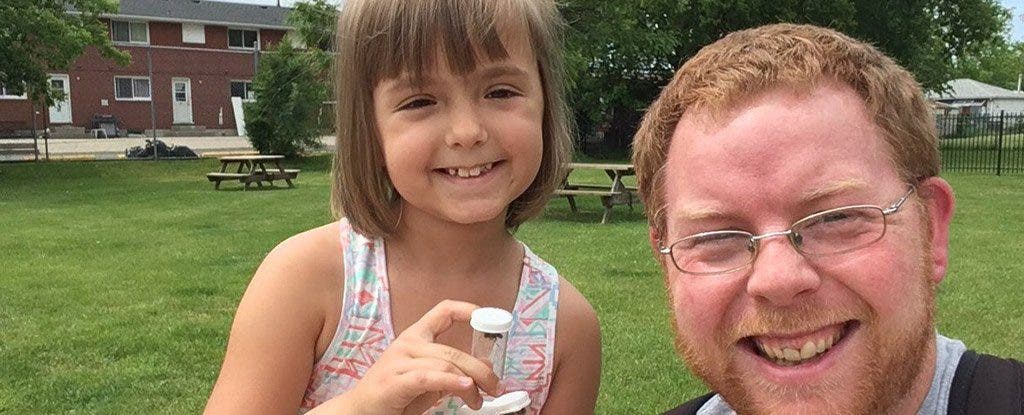The biggest challenge for girls interested in science is that they don’t get enough encouragement. This is why we have fewer women who make it in science and technology fields. Luckily for Sophia Spencer, a budding 8-year-old entomologist, she has gotten overwhelming support for her passion. She loves bugs and brought them to school but was teased for it. A Twitter message sent by her mother to the Entomologist Society got her in contact with “bug” researchers. The precocious bug-lover is the now the co-author of a published journal article. Take that bullies!
Sophia’s mother wanted to encourage her daughter’s interest in insects but wasn’t sure how to do that herself. She wrote an email to the Entomological Society of Canada for advice.
“She is often teased at school by her peers because she will proudly display her current bug friend on her shoulder. I was wondering if a professional entomologist would speak to her over the phone to encourage her love and explain to her how she could make this into a career. If someone could maybe talk to her for even five minutes, or who won’t mind being a penpal for her, I would appreciate it so much,” wrote the mother in her letter.
The Society shared the email on their Twitter account. They even created a new hashtag, #BugsR4Girls, to connect entomologists with Sophia. The post went viral and messages flooded in. The post got so much attention that it reached more than a million people. Not only is that positive for Sophia, but encourages young budding scientists all around the world.

Now a study has been published based on the tweet and response in the Entomological Society of America’s journal. Sophia is the co-author! The main author, Morgan Jackson is a Ph.D. student who wrote the original tweet for the Society.
The paper analyses the tweet and response to it, along with how it contributed to science communication. Sophia got 135 direct messages from mostly female entomologists. Jackson analyses the choice of text and photo for the tweet and its effectiveness. He also comments on how “grammar and taxonomic accuracy were sacrificed for brevity and conciseness” for the hashtag which also contributed to the success.
Sophia even wrote a whole section of the paper herself.
“After my mom sent the message and showed me all the responses, I was happy .. It felt good to have so many people support me, and it was cool to see other girls and grown-ups studying bugs. It made me feel like I could do it too, and I definitely, definitely, definitely want to study bugs when I grow up, probably grasshoppers. And now I have a microscope somebody sent to me, and when I bring it to school, the kids in my school, whenever they find a bug they come and tell me and say “Sophia, Sophia, we found a bug!” I told my best friend and her sister about bugs, and now they think they’re cool, and her sister will pick up any bug! I think other girls who saw my story would like to study bugs too,” Sophia wrote about her experience.
This made a positive impact on Sophia’s life, encouraged her to continue her interests, and change the opinions of her classmates. More girls should be encouraged to follow science fields— it makes such a difference.
Journal reference: Morgan D. Jackson, Sophia Spencer; Engaging for a Good Cause: Sophia’s Story and Why #BugsR4Girls, Annals of the Entomological Society of America, Volume 110, Issue 5, 1 September 2017, Pages 439–448, https://doi.org/10.1093/aesa/sax055.


